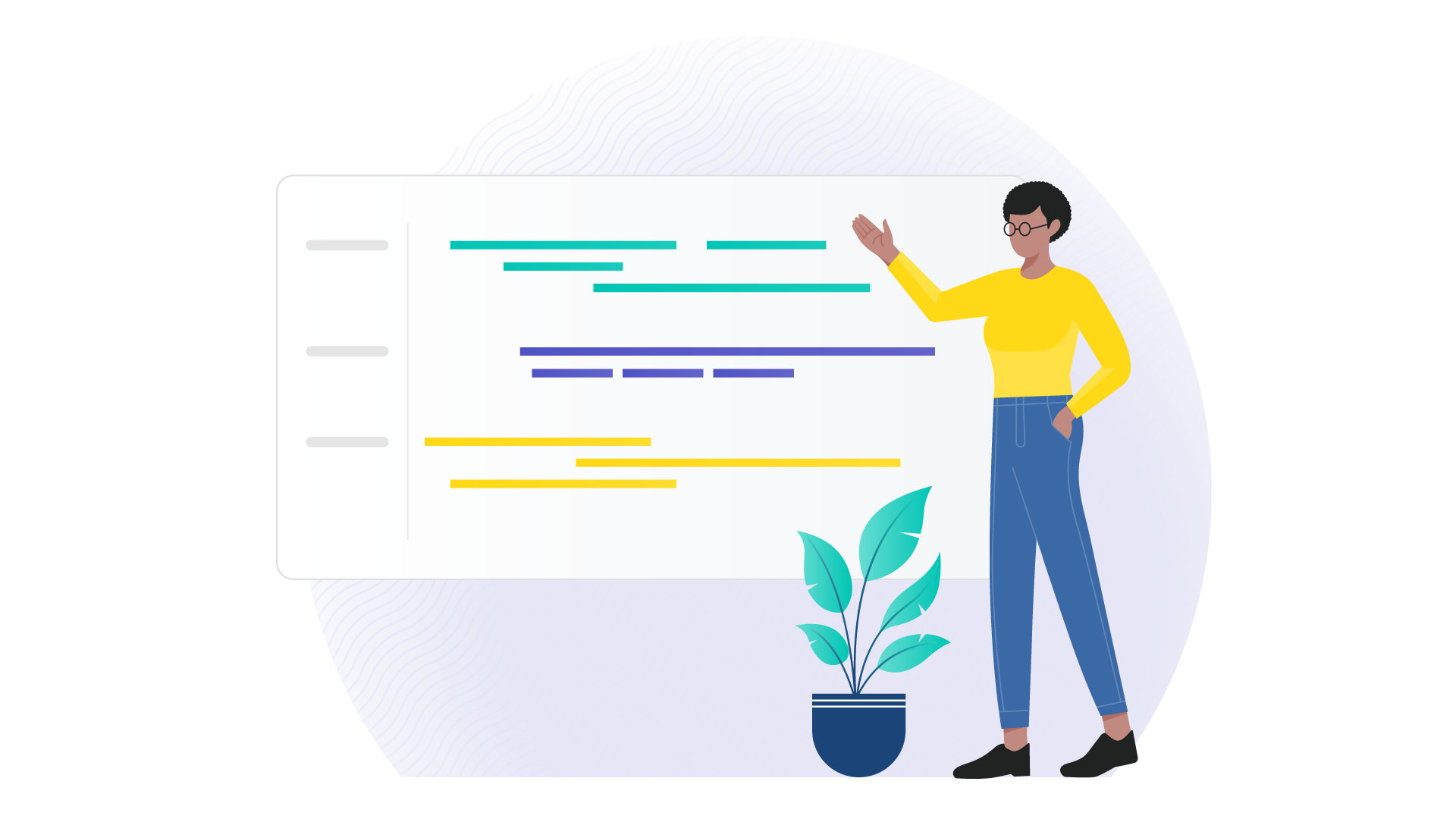What is a Roadmap?
A roadmap is a strategic overview of one or more projects, their progress, milestones, and objectives.
Roadmap:
Definition | Examples | Synonyms
The term “roadmap” refers to a comprehensive overview of at least one project and its results, milestones, and goals visualized over a period of time. A roadmap forms the basis for the successful strategic planning of your projects.

A Practical Example
Carlos is a portfolio coordinator for a software company. He draws up a roadmap to plan the next year. In the marketing department, for example, a major event is due to take place in November. This means that planning for it should start as early as May. Additionally, IT is planning to implement new communication software within the first quarter.
Carlos puts these and all other approved projects on the roadmap to get a strategic overview. This makes it clear what is planned when and in what timeframe. He can then share this with his colleagues and ensure all teams have the same understanding.

Synonyms und Abbreviations
A Gantt chart is a similar concept but not a direct synonym. Although Gantt charts are based on the concept of a roadmap, they deal with implementation planning rather than focusing on strategy and goals.
There are no abbreviations for the term roadmap.
FAQ
- A simple overview of abstract processes
Projects are often very complex. This makes it more difficult to have and maintain an overview. With a roadmap, you get an uncomplicated overview and can see all the important phases at once. - Strategic alignment of projects
With a roadmap, you can see whether your current and future projects are aligned with the company’s goals. This also ensures that you are using your resources wisely. - Uncomplicated communication
If you and your colleagues keep the roadmap well-maintained and up to date, it simplifies communication as a lot of information is easily visible.
To create a roadmap, follow these steps:
- Define goals and strategy: Think about it in advance. What strategy are you pursuing? What is your vision? Who are the stakeholders? What are the challenges? What is the main goal?
- Collect information: Gather all the important data you need, e.g., project plans, budgets, schedules, etc.
- Set priorities: Which outcomes and initiatives are most important to achieve your strategic goals?
- Determine the structure, milestones, and time frame: Set a realistic end date for your project. This will create accountability and ensure that the project is not pushed aside. Structure the roadmap and define main phases and tasks. Mark on your roadmap when certain achievements should be reached. By defining milestones, you can divide the strategy into achievable goals and concrete measures.
- Review and optimize your roadmap: Make sure you have entered all the information correctly and that your goals and messages are clear.
- Share your roadmap: Bring other stakeholders on board and get their input. Use the roadmap to transparently communicate your project’s progress, direction, and priorities.
- Update your roadmap regularly: Always add new data and findings to the roadmap to ensure you have an up-to-date overall picture.
In project management and project portfolio management, roadmaps are helpful for maintaining an overview of a project or the entire portfolio. They help you present your strategic planning clearly and make it transparent for others in the company. Roadmaps provide quick answers to questions such as the following:
- Are your projects going according to plan?
- Are they in line with the corporate strategy?
- Where could bottlenecks occur?
- Where are there dependencies?
- Are you utilizing your resources correctly?
Gantt charts and roadmaps are similar in many ways – after all, they do both depict projects on a timeline. The main difference between them is how people use them.
Gantt charts focus on project implementation. They help you understand how a project should be completed (when, with how much capacity, etc.).
Roadmaps, on the other hand, depict the big picture, without details on specific implementation or capacities. Therefore, they’re a great tool for maintaining an overview. They focus on strategy and goals and show you why a project should be completed.
A project timeline visually displays tasks within a project in chronological order. It is more detailed than a roadmap, but has no focus on strategy or goal. A roadmap usually includes a timeline.
Roadmaps with Meisterplan
The Roadmap view in Meisterplan provides a clear look at your portfolio and supports you in aligning all your projects with the company’s strategic goals. Your roadmap is automatically generated using the data you entered throughout project planning.
Thanks to many different features, you can easily customize the roadmap to match your needs. Depending on whether you want to visualize short-term or long-term plans, you can set the zoom level by week, month, or year. You can choose to group projects together in certain ways, such as by business objective or department, to make things clearer. And thanks to helpful filters, you can use criteria like project managers or project types to find exactly what you’re looking for.
Furthermore, the Roadmap view allows you to see your projects’ dependencies and milestones at a glance, making it easier for you to maintain an overview. You can also easily share your roadmap with colleagues and other stakeholders by saving it as an image and sending it to the relevant people. This helps to make the corporate strategy transparent to everyone.
Discover More Here!
Dive even deeper into the topics of project, portfolio and resource management: Each page offers expert knowledge, product insights and a wealth of experience we'd like to share with you.

Everything You Need to Know about Project Portfolio Management (PPM)

Roadmap View
